Uncover Carcassonne's vibrant flavors and culinary gems with our expert guides. Plan an unforgettable trip now!
Read more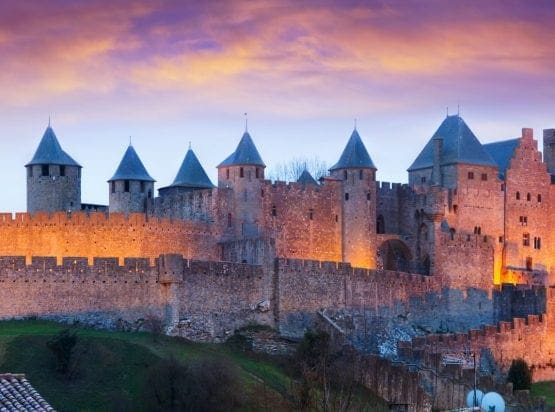
EXPLORE ALL OUR LANGUEDOC-ROUSSILLON WINE REGION GUIDE
Last updated: April 4, 2025
La Clape is one of the Languedoc’s most inspiring success stories. For decades, the generic Coteaux du Languedoc appellation subsumed this exceptional terroir, mentioning it as a named subzone without formally legally recognizing its unique identity. This situation persisted despite the clearly superior quality of the wines made in the vineyards of La Clape, teetering on the fringes of Narbonne.
However, after a sustained campaign led by producers and winegrowers, La Clape was awarded its own AOC in 2015. Its exceptional red and white wines, infused with the scent of minerals and seawater, have become the talk of the town.
Discover More About French Wine
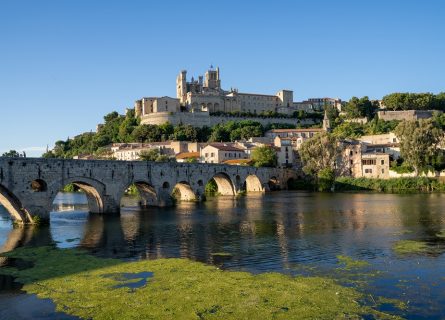
The Romans may have mastered the art of winegrowing in ancient Europe, but the Phoenicians planted vines in the hills and valleys of the Midi. After the Romans conquered Gaul in the last century BC, Narbonne – or Narbo as it was colloquially known – became the capital of Gallia Narbonensis and one of the principal Roman cities in Gaul.
Meanwhile, Julius Caesar encouraged the development of local viticulture via a system of grants awarded to the empire’s loyal troops. At its zenith, the Western Roman Empire encompassed lands in Europe and North Africa, inevitably planting vines on any fertile land.
However, after the empire fell into ruin in AD 476, both the Visigoths and Moors brought death and destruction to Narbonne until Pepin the Short defeated the latter in 759. By the Middle Ages, the Catholic Church largely controlled viticulture in the Languedoc, with orders of Benedictine and Cistercian monks managing and administering it.
Indeed, the area greatly prospered from wine exports in the 12th century, as Narbonne became a major center of pan-European trade.
Unfortunately, La Clape’s foremost geographical advantage, namely its direct access to the quaysides, evaporated during the 1300s after the shallow waterways became silted up. Of course, this was good news for rival ports like Sete, which prospered as the harbors of Aigues Mortes and Narbonne became cut off from the Mediterranean.
Renaissance through Infrastructure
Yet the establishment of the Canal du Midi and Canal de la Robine in the 17th century saw a revival in La Clape’s fortunes, further aided by the introduction of the railway in the 1800s. While the Languedoc flourished, restaurants and taverns in Paris received great quantities of wine shipped and transported to them.
But, like much of Western Europe, La Clape’s wine industry was devastated by the arrival of oidium and phylloxera in the late 19th century.
Eventually, across the Midi, a major replanting program involved regrafting European vines onto resistant American rootstock. However, it would be half a century before the industry regained strength.
Embracing Quality in the Modern Era
Still, this is ancient news – the Languedoc has thrown off the shackles of 20th-century mediocrity and embraced quality wine growing. It is a thrilling region producing thrilling wines.
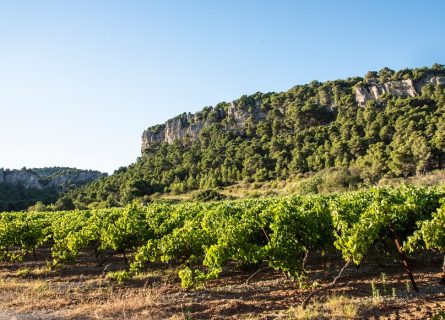
Before 2015, one of the most obviously distinctive terroirs of the Languedoc was an obscure vineyard that sailed under the generic Languedoc AOC banner. However, much has changed since the award of appellation status nine years ago; La Clape now vies with Minervois for the title of “most dynamic producer” in the south of France.
Situated less than 12 kilometers from the Mediterranean, La Clape basks in endless summer sunshine, while the winter months are exceedingly mild. Today, just over 760 hectares are cultivated in this spectacular limestone massif (a mass of rocks) to the southeast of Narbonne, encompassing the villages of Armissan, Fleury-d’Aude, Salles-d’Aude, and Vinassan.
Wines produced on the outskirts of Narbonne, based on fruit harvested from vines cultivated at lower altitudes, are clearly the products of Mediterranean sunshine: ripe, highly concentrated expressions of fruit and alcohol.
Beyond Sunshine: The Complexity of La Clape
Yet, due to variances in elevation and the influence of regional etangs (coastal lagoons), La Clape is far more than simply “sunshine in the bottle”. In particular, the saline dry whites of the zone, including the iodine-scented Bourboulenc, reflect the garrigue-covered landscape of the region, with a freshness and definition that flows from high-altitude viticulture and relatively cool nights.
Meanwhile, the soils of La Clape are generally composed of limestone and clay, free-draining terroir to retain just the right amount of moisture in dry weather. Sandstone is another omnipresent sight in La Clape, known locally as grès.
Diverse Grape Varieties
Of La Clape’s small production, about 80% is red and typically blends classic Mediterranean grapes such as Grenache, Carignan, and Mourvedre. Like the noble Syrah, this trio of robust grape varieties can thrive in the region’s warm and dry climate, yielding voluptuous, herb-scented red wines. But white vines, not least Bourboulenc and Grenache Blanc, have also proven to be a vital part of La Clape’s viticultural landscape.
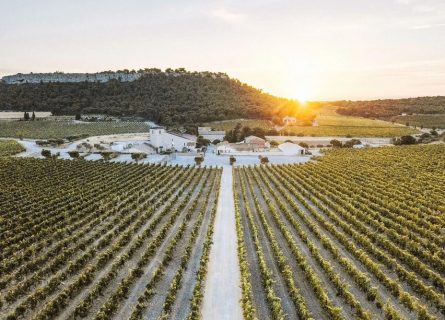
The grand sweep of vines that constitute the western Languedoc have an ignoble legacy of producing coarse plonk for bulk shipping, blending, and/or distillation. Yet, to taste the finest cuvees of La Clape is to dispel any notion of mediocrity or cost-cutting in 2024.
Indeed, these superlative red and white blends are terroir-driven expressions that capture, with total authenticity, the soils and landscape of the region. This is achieved via a judicious mix of intuitive viticulture and sensitive, bespoke winemaking.
A Benchmark of Excellence
Château de l’Hospitalet is a notable exemplar of this nuanced approach to fermentation and maturation. Served to a Chinese delegation during a French presidential visit in 2019, it has earned its (deserved) reputation as one of France’s greatest reds.
According to the appellation rules, at least two grape varieties must be present in every bottle of La Clape rouge, including a minimum of 70% Grenache, Syrah, and/or Mourvedre. So it is with Château de l’Hospitalet: all three grapes contribute something essential to the blend, namely freshness, fruit, structure, and perfume.
Before the harvest, a team of growers constantly tastes and analyzes the grapes, allowing them to determine an optimum picking date. Then, workers hand-harvest the berries, sort and destem them before transferring them to temperature-controlled vats. The winemaker ferments each variety in a separate vessel, allowing the selection of only the finest wines for the Grand Vin.
The Art of Aging and Blending
After a relatively extended post-fermentation maceration (about 25 days), the wines are racked into new French barrique and left to slowly age for at least 12 months – the most powerful vintages may necessitate 16-18 months. During this time, periodic lees stirring will enrich the wine and enhance its texture and mouthfeel.
The result is an intense and thought-provoking wine, with some of the wild character and garrigue perfume that characterizes all good Minervois.
Revolutionizing White Winemaking
White winemaking has also become a lot more sophisticated over the past decade as global demand for dry white wines continues to grow; La Clape produces some very refined blends of Bourboulenc and Grenache, perhaps augmented with a dash of Roussanne, Marsanne, and/or Vermentino.
Château de l’Hospitalet Blanc, however, takes the best qualities of Bourboulenc, Grenache Blanc, Vermentino, and Viognier and amplifies them in French oak – wood is used in both the fermentation and maturation (eight months) stages of the winemaking. Yet it is fresh as a daisy: a harmonious marriage of oak and fruit that displays all the potency of a great Hermitage Blanc—a genuine bargain.
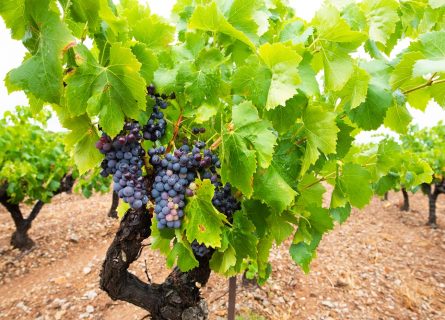
Collectors and oenophiles greatly admire La Clape’s site-specific, complex, and age-worthy red wines. The best of this firmament can dazzle us with their intense perfume, racy acidity, and powerful fruit. But what is less commonly known is that some of France’s most exciting whites are also made in this Mediterranean enclave, able to compete with top Hermitage and Châteauneuf-du-Pape Blanc. That’s a remarkable turn of events from a vineyard that once produced some of Europe’s most dire bottles of white dross.
Transforming the Image of Languedoc Blanc
Indeed, the image of Languedoc Blanc was ‘somewhat’ bruised in the 20th century, as rustic equipment and lazy viticulture resulted in an uninspiring crop of oxidized and charmless whites. However, it all looks very different today, and the region’s white wine sector, buoyed by rising consumer interest, remains one of the most vibrant parts of La Clape’s small industry.
Nevertheless, the numbers speak for themselves, with exports of La Clape Blanc growing in key world markets. And with good reason: indigenous grapes like Bourboulenc and Grenache Blanc have a real affinity with the ancient limestone marls of the appellation. They reveal a depth of flavor that is rare even in the leading terroirs of the Languedoc; few regions can marry opulence, exoticism, and finesse so effortlessly as this rising star in southern France.
A New Era for La Clape Whites
Moreover, local vignerons increasingly embrace organic and biodynamic viticulture while new blends (Viognier and Bourboulenc is a surprise hit) continue to be pioneered.
Today, the split between red and white production is roughly 80/20 percent in the zone. But, with each passing vintage, the gap is narrowing.
Bourboulenc is a white wine grape variety grown mainly in Southern Rhône, Provence, and Languedoc in southern France.
Find out moreSavor Clairette blanche, a captivating white wine grape from France's Chateauneuf-du-Pape, Provence, Rhône, and Languedoc vineyards
Find out moreGrenache blanc is a white wine grape varietal popular in the Rhône, Châteauneuf-du-Pape and Languedoc-Roussillon regions of Southern France.
Find out moreDiscover Viura: Rioja's Prominent White Grape & Catalonia's Macabeo. Explore its versatility in exquisite wines. A must-read for wine enthusiasts.
Find out moreUncover the allure of Marsanne grape variety. From its traditional role in Rhône blends to the new wave of single-varietal Marsanne wines.
Find out moreLearn about Roussanne, the elegant white grape native to Rhône. Often blended with Marsanne, explore its unique qualities and rich heritage in our guide.
Find out morePicpoul Blanc is a white wine grape varietal grown primarily in the Rhone Valley and Languedoc-Roussillon regions of France.
Find out moreExplore the Renaissance of Sardinian Vermentino: From Forgotten Grape to Crisp Elegance. Discover Now!
Find out moreViognier comes from the northern Rhône valley AOC of Condrieu and is where its most famous white wines are produced.
Find out moreCarignan is a red grape variety that grows mostly in Southern France, and is often used as a blending grape
Find out moreCinsault is a red wine grape that is important in the Languedoc-Roussillon wine region of France because of its tolerance to high temperatures.
Find out moreDiscover grenache, a mediterranean grape that is dark-skinned red wine grape variety and an unlikely hero of a grape
Find out moreMourvèdre is a red wine grape variety of mysterious origin that's grown around the world, including the Rhone and Provence regions of France.
Find out moreSyrah is dark-skinned and perhaps the most underrated of the 'noble' red grape varieties.
Find out moreOften sidelined in favor of Carcassonne or Montpellier, Narbonne (La Clape’s nearest city) has plenty of distractions: a massive food market, excellent seafood restaurants, and informal bistros.
After a morning browsing the myriad of stalls at Les Halles, Narbonne’s art nouveau-covered market, make a beeline for the old town. Every type of fresh fish and shellfish you can imagine will be grilled, baked, pan-fried, or even sous vide. Bon Appétit.
A Gastronomic Guide to the Cuisine of Languedoc-Roussillon: Read more

Uncover Carcassonne's vibrant flavors and culinary gems with our expert guides. Plan an unforgettable trip now!
Read moreIf you would like us to customize an exclusive luxury tour, contact us and let us know your travel plans. We offer luxury food and wine tours for private groups of a mininium two guests. In addition, all of our private, chauffeured tours are available year-round upon request.

